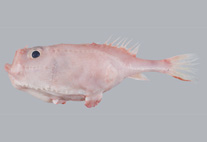Abstract
Three new species are described in the genus Drymopsalta Ewart, previously known only from D. crepitum Ewart and D. daemeli Distant. The three new species occur in Southern Queensland and Northern Territory. D. wallumi sp. nov. occurs along coastal S.E. Queensland, whereas D. hobsoni sp. nov. is restricted to the Bringalily State Forest, near Inglewood, southern inland Queensland. D. acrotela sp. nov. is found in the Litchfield National Park and other locations near Jabaluka, Cahills Crossing, E. Alligator River and Nourlangie, all across the northern Northern Territory. D. crepitum occurs on the Cape York Peninsular extending into the southern Gulf, while D. daemeli occurs in two localised regions in central coastal N.S.W. Each of the species inhabits heath vegetation, often spilling-over into adjacent tree foliage. The species of Drymopsalta are small and inconspicuous cicadas (<15 mm body length) with relatively high frequency songs (~15 to 22 kHz). The temporal structures of the normal calling songs follow a similar pattern in each species, consisting of the emission of short chirps (comprising 2–16 ticks). Between the chirps are emitted one (D. wallumi, D. hobsoni, D. acrotela), two (D. daemeli) or 1–9 (D. crepitum) intervening single ticks. The species can be distinguished by the timing and the number of these single ticks relative to the adjacent chirps with the notable exception of D. hobsoni and D. acrotela. The calling songs of these two allopatric species are indistinguishable, an unusual feature in Australian cicadas. Two additional song variants are described, a more unstructured chirping song without intervening single ticks observed in each of the species except D. crepitum, and periodic extended buzzing echemes emitted within the calling songs (excepting the D. wallumi song).
References
Bennet-Clark, H.C. (1997) Timbal mechanics and the control of song frequency in the cicada Cyclochila australasiae. The Journal of Experimental Biology, 200, 1681–1694.
Bradbury, J.W. & Vehrencamp, S.L. (1998) Principles of animal communication. Sunderland Mass.: Sinauer Associates, 882pp, plus bibliographical references and index.
de Boer, A.J. (1999) Taxonomy and biogeography of the New Guinean Cicadettini (Hemiptera, Tibicinidae). Mitteilungen Museum Naturkunde Berlin: Deutsche entomologische Zeitschrift, 46(2), 115–147.
http://dx.doi.org/10.1002/mmnd.19990460202Dugdale, J.S. (1972) Genera of New Zealand Cicadidae (Homoptera). New Zealand Journal of Science, 14(4), 856–882.
Ewart, A. 1988. Cicadas (Homoptera ) In: Scott, G. (Ed.), Lake Broadwater. The natural history of an inland lake and its environs. Lake Broadwater Natural History Association and Darling Downs Institute Press: Toowoomba (Queensland), pp. 180–201.
Ewart, A. (1989) Revisionary notes on the genus Pauropsalta Goding and Froggatt (Homoptera: Cicadidae) with special reference to Queensland. Memoirs of the Queensland Museum, 27(2), 289–375.
Ewart, A. (1998) Cicadas, and their songs of the Miles-Chinchilla region. The Queensland Naturalist, 36(4–6), 54–72.
Ewart, A. (2005) New genera and species of small ticking and 'chirping' cicadas (Hemiptera: Cicadidae) from Queensland, with descriptions of their songs. Memoirs of the Queensland Museum, 51(2), 439–500.
Ewart, A. & Marques, D. (2008) A new genus of grass cicadas (Hemiptera: Cicadoidea: Cicadidae) from Queensland, with descriptions of their songs. Memoirs of the Queensland Museum 52, 149–202.
Ewart, A. & Popple, L.W. (2001) Cicadas, and their songs, from south-western Queensland. The Queensland Naturalist, 39(4–6), 52–71.
Faith D.P., Minchin, P.R. & Belbin, L. (1987) Composition dissimilarity as a robust measure of ecological distance. Vegetatio, 69, 57–68. http://dx.doi.org/10.1007/BF00038687
Legendre, P. & Legendre, L. (1998) Numerical ecology. Elsevier Scientific Publishing Company, Amsterdam, 853pp.
McCune, B. & Mefford, M.J. (2006) PC-ORD. Multivariate analysis of ecological data, version 5.05. MjM Software Design, Gleneden Beach, Oregon.
Moulds, M.S. (2005) An appraisal of the higher classification of cicadas (Hemiptera: Cicadoidea) with special reference to the Australian fauna. Records of the Australian Museum, 57, 375–446. http://dx.doi.org/10.3853/j.0067-1975.57.2005.1447
Moulds, M.S. (2012) A review of the genera of Australian cicadas (Hemiptera: Cicadoidea). Zootaxa, 3287, 1–262.
Pinto-Juma, G., Simões, P.C., Sebra, S.G. & QUARTAU, J.A. (2005) Calling song structure and geographic variation in Cicada orni Linnaeus (Hemiptera: Cicadidae). Zoological Studies, 44, 81–94.
Popple, L.W. (2003) Intraspecific variation or species specificity in cicada songs: the Pauropsalta annulata species complex (Auchenorrhyncha: Cicadidae). Honours Research Thesis, Department of Zoology and Entomology, The University of Queensland, pp. 70.
Popple, L.W. & Strange, A.D. (2002) Cicadas, and their songs, from the Tara and Waroo Shires, southern central Queensland. The Queensland Naturalist, 40(1–3), 15–30.
Quartau, J.A. & Simões P.C. (2006) Acoustic evolutionary divergence in cicadas: The species of Cicada L. in Southern Europe. In: Drosopoulos, S. & Claridge, M.F. (Eds) Insect Sounds and Communication. Physiology, Behaviour and Evolution. Taylor & Francis, pp. 227–237.
Seabra, S.G., Pinto-Juma, G. & Quartau, J.A. (2006) Calling songs of sympatric and allopatric populations of Cicada barbara and C. orni (Hemiptera: Cicadidae) on the Iberian Peninsula. European Journal of Entomology, 103, 843–852.
Simões, P.C., Boulard, M., Rebelo, M.T., Drosopoulos, S., Claridge, M.F., Morgan, J.C. & Quartau, J.A. (2000) Differences in the male calling songs of two sibling species of Cicada (Hemiptera: Cicadoidea) in Greece. European Journal of Entomology, 97, 437–440.
Simmons, P. & Young, D. (1978) The tymbal mechanism and song patterns of the Bladder Cicada Cystosoma saundersii. The Journal of Experimental Biology, 76, 27–45.
Sueur, J. (2002) Cicada acoustic communication: potential sound partitioning in a multispecies community from Mexico (Hemiptera: Cicadomorpha: Cicadidae ). Biological Journal of the Linnean Society, 75, 379–394. http://dx.doi.org/10.1111/j.1095-8312.2002.tb02079.x
Sueur, J. & Aubin, T. (2004) Acoustic signals in cicada courtship behaviour (order Hemiptera, genus Tibicina). Journal of Zoology, 262, 217–224. http://dx.doi.org/10.1017/S0952836903004680
Young, D. (1972) Analysis of songs of some Australian cicadas (Homoptera: Cicadidae). Journal of the Australian Entomological Society, 11, 237–243. http://dx.doi.org/10.1111/j.1440-6055.1972.tb01623.x

